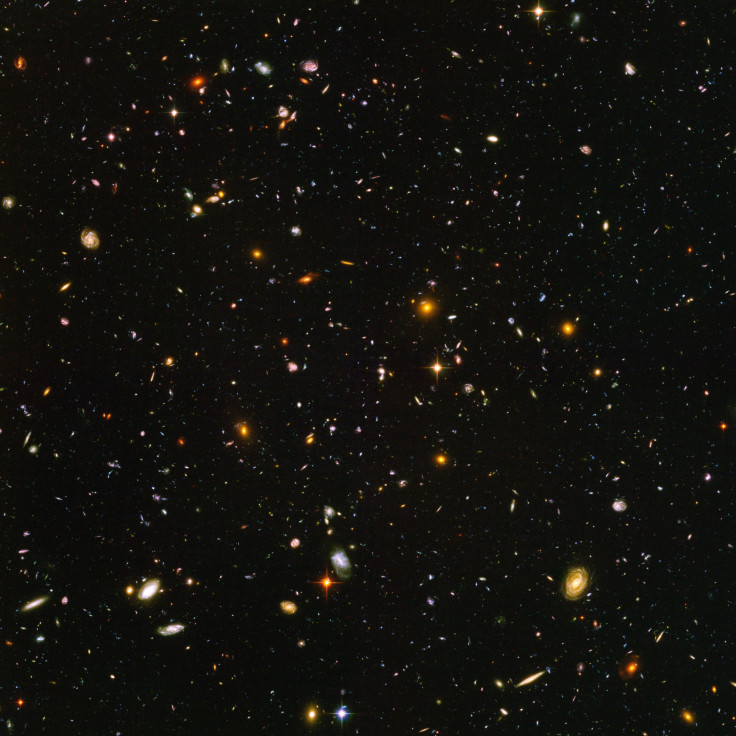NASA's Hubble Captures Stunning Ancient Galaxy Cluster In Incredible Image [PHOTO]

An ancient galaxy cluster was recently imaged by the NASA/ESA Hubble Space Telescope.
NASA has shared a stunning image of a galaxy cluster with the designation SPT-CL J0615-5746, which can be shortened to SPT0615. First observed by the South Pole Telescope less than a decade ago, galaxy cluster SPT0615 is located about 97 light-years away in the constellation of Pictor (the Painter's Easel), according to NASA's website.
"Just as ancient paintings can tell us about the period of history in which they were painted, so too can ancient galaxies tell us about the era of the universe in which they existed," NASA posted.
#HubbleFriday Just as ancient paintings can tell us about the period of history in which they were painted, so too can ancient galaxies tell us about the era of the universe in which they existed. To learn more about galaxy cluster SPT0615: https://t.co/SrprSTURXG pic.twitter.com/i4jnmD8WeN
— Hubble (@NASAHubble) May 10, 2019
SPT0615 has many notable characteristics. The massive cluster of galaxies is one of the farthest observed to cause gravitational lensing and contains one of the oldest galaxies ever discovered by mankind.
Gravitational lensing happens when "light from a background object is deflected around mass between the object and the observer." Basically, a massive object acts as a lens, bending the path of light to such a degree that background objects look like fun-house mirrors.
The galaxy, which was designated SPT0615-JD, is believed to have formed 500 million years after the big bang, making it over 13 billion years old. Aside from being considered one of the most anciernt cosmic objects in the universe, SPT0615-JD is also the farthest galaxy ever captured in an image with the help of gravitational lensing.
Astronomers continue to study galaxies and other cosmological structures in the farthest reaches of the universe in order to gain a better understanding of how the universe looked during its early days and how it eventually came to be the way it is now.
Prior to releasing the image of the ancient galaxy cluster, Hubble also snapped a close-up view of a stunning spiral galaxy. In the image, the spiral galaxy NGC 2903 appears like a glowing pinwheel with twinkling stars, glowing bursts of gas and dark wisps of cosmic dust.
Located around 30 million light-years away in the constellation of Leo (the Lion), NGC 2903 was just one of the 145 disk galaxies being observed by the Hubble telescope.
#HubbleFriday Few of the universe’s residents are as iconic as the spiral galaxy. This beauty, NGC 2903, is located about 30 million light-years away and was studied as part of a Hubble survey of the central regions of roughly 145 nearby disk galaxies: https://t.co/bG15p8Aqzn pic.twitter.com/frz8SIPypX
— Hubble (@NASAHubble) May 3, 2019
© Copyright IBTimes 2025. All rights reserved.





















